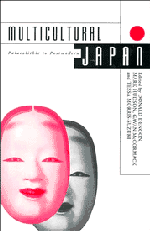Book contents
- Frontmatter
- Contents
- List of Figures and Tables
- List of Contributors
- Abbreviations
- Introduction
- Part 1 Archaeology and Identity
- Part 2 Centre and Periphery
- Part 3 Contact with the Outside
- 8 Some Reflections on Identity Formation in East Asia in the Sixteenth and Seventeenth Centuries
- 9 Siam and Japan in Pre-Modern Times: a note on mutual images
- 10 Indonesia under the ‘Greater East Asia Co-Prosperity Sphere’
- 11 Japanese Army Internment Policies for Enemy Civilians during the Asia-Pacific War
- Part 4 The Japanese Family
- Part 5 Culture and Ideology
- Afterword: Diversity and Identity in the Twenty-First Century
- Index
10 - Indonesia under the ‘Greater East Asia Co-Prosperity Sphere’
Published online by Cambridge University Press: 05 November 2011
- Frontmatter
- Contents
- List of Figures and Tables
- List of Contributors
- Abbreviations
- Introduction
- Part 1 Archaeology and Identity
- Part 2 Centre and Periphery
- Part 3 Contact with the Outside
- 8 Some Reflections on Identity Formation in East Asia in the Sixteenth and Seventeenth Centuries
- 9 Siam and Japan in Pre-Modern Times: a note on mutual images
- 10 Indonesia under the ‘Greater East Asia Co-Prosperity Sphere’
- 11 Japanese Army Internment Policies for Enemy Civilians during the Asia-Pacific War
- Part 4 The Japanese Family
- Part 5 Culture and Ideology
- Afterword: Diversity and Identity in the Twenty-First Century
- Index
Summary
Introduction
In autumn 1991 Emperor Akihito made the first visit by a Japanese emperor to three countries in South-east Asia: Thailand, Malaysia and Indonesia. Although the visit occurred in an atmosphere of tight security precautions, all three countries officially welcomed this epochmaking event as a reflection of their friendly relations with Japan. However, the major Indonesian newspaper Suara Pembaruan marked the occasion with an editorial entitled ‘Wound healed, but scar remains’ – an apt reminder of the three and a half years of the ‘Greater East Asia Co-Prosperity Sphere’, whose memory lingers in the hearts of the peoples of South-east Asia.
This chapter aims to elucidate the modern history of Japan in the Asia-Pacific region by analysing Japanese wartime relations with Southeast Asia, and particularly with Indonesia. As an introduction, it may be helpful to survey the process of Japanese identity formation in the context of modern Asian history, and the characteristics of bilateral relations between Japan and Indonesia before the war.
Japan in Asia: the Formation of Japan's Self-image
The world view of the Japanese before the Meiji era may be represented by the phrase ka-iteki chitsujokan (a world view based on the Chinese model of civilisation and barbarism). In Ka-i tsūshōkō, Nikshikawa Joken, a leading intellectual in the early eighteenth century, divided Asia into two categories; ‘foreign countries’ and ‘outer barbarians’. The former included Korea, the Ryūkyū Islands, Taiwan, Tonkin, Cochin China, which were under the influence of Chinese culture, while the latter included most of South-east Asia except Vietnam.
- Type
- Chapter
- Information
- Multicultural JapanPalaeolithic to Postmodern, pp. 160 - 173Publisher: Cambridge University PressPrint publication year: 1996
- 1
- Cited by



